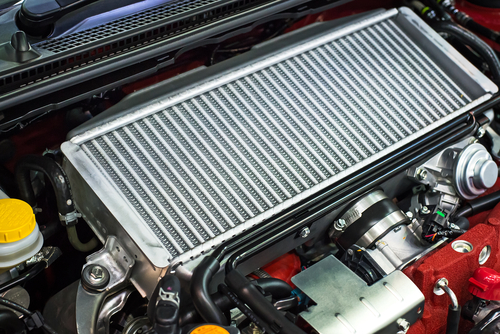Car radiators are responsible for keeping the vehicles engine at the optimal temperature for performance. This includes delivering coolant to reduce heat. However, the radiator itself is made up of a number of different parts and components, all of which can experience problems and issues over time. So what are the most common problems with different car radiator parts? And how can these be identified?
What are the most common problems with different car radiator parts?
Different car radiator parts can experience a number of different problems and issues. These can include:
- Radiator core- As the central component of your car radiator, the core itself can experience a number of problems and issues. This consists of a number of tubes and fins which carry coolant around the system, and allow the heat to be dissipated into the air through the fins. As such, one of the most common problems associated with the radiator core is clogging and blockages. Over time, debris, rust, and sediment can accumulate inside the tubes, restricting coolant flow and reducing the radiator’s efficiency. To prevent this, regular flushing of the cooling system can be highly effective.
- Inlet and outlet tanks- Another important component of the car radiator is the inlet and outlet tanks. These are tanks that are situated on either side of the core and serve as entry and exit points for the coolant. They are usually made of plastic or metal, and cracks forming in the plastic tanks are a frequent and common issue to the heat and pressure within the system. Metal tanks tend to be more resilient, but these can also develop leaks from corrosion or physical damage. As such, inspecting these tanks regularly for signs of leaks or cracks can be an effective option to prevent sudden coolant loss and engine overheating.
- Radiator cap- The radiator cap plays an essential role in regulating the pressure within the cooling system on the whole. This allows the coolant to expand and contract by releasing excess pressure into an overflow tank and drawing it back as needed. As a result, a fault or problem with the radiator cap can lead to coolant loss, overheating, or even radiator damage due to unregulated pressure. This means that replacing the radiator cap is essential, as soon as this shows signs of wear or compromise.
- Cooling fan- The cooling fan is another crucial component of your car radiator system. This can be either mechanical or electric, and it is designed to draw in air through the radiator core to help dissipate heat, especially when the car is stationary or moving slowly. Problems with the cooling fan can arise from motor failure, electrical issues, or damage to the fan blades. This can be a significant issue as if the cooling fan isn’t functioning correctly, the radiator cannot effectively dissipate heat, leading to engine overheating.
- Thermostat- The thermostat controls the flow of coolant between the radiator and the engine. It remains closed when the engine is cold to allow it to warm up quickly and opens as the engine reaches its operating temperature to let the coolant flow to the radiator. A stuck thermostat can cause severe problems: if it stays closed, the engine can overheat; if it stays open, the engine might run too cool, leading to poor fuel efficiency and increased emissions.
- Hoses and clamps- Radiator hoses transport coolant between the engine, radiator, and other components of the cooling system. These hoses are secured with clamps to prevent leaks. Over time, hoses can become brittle and develop cracks, or they can swell and burst under pressure. Regularly inspecting and replacing worn hoses and ensuring clamps are tight can prevent leaks and coolant loss.
Here at MRS Heat Transfer we are radiator, car heater, intercooler, and air conditioning experts, and we have the skills, knowledge and expertise to resolve any air conditioning or car heater problem. Why not get in touch today to find out more?

